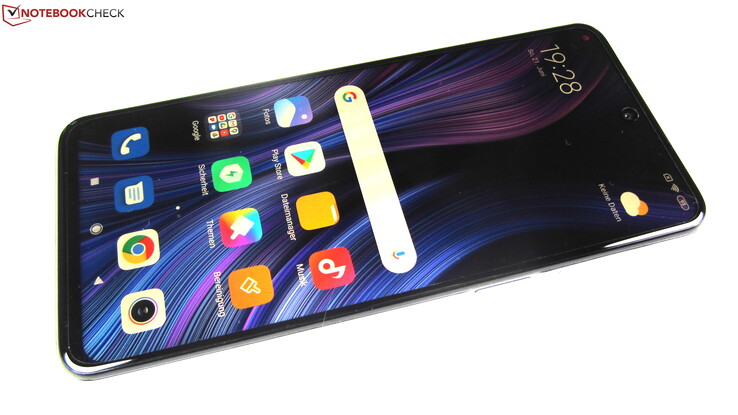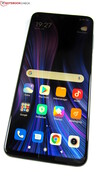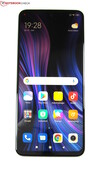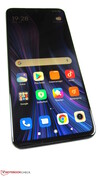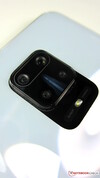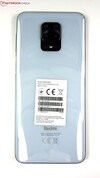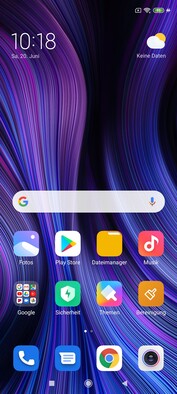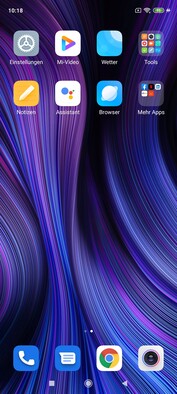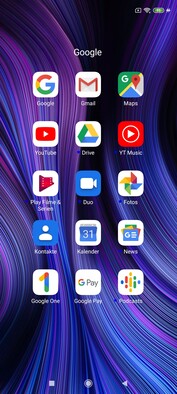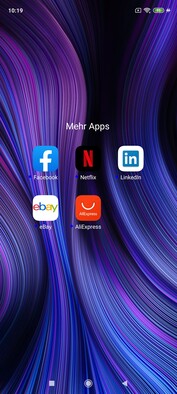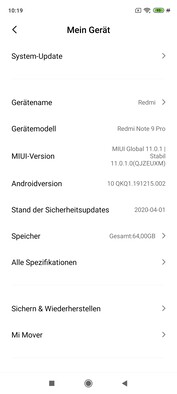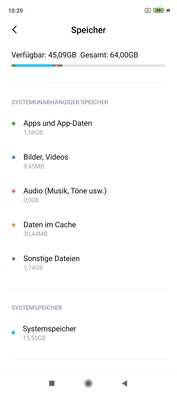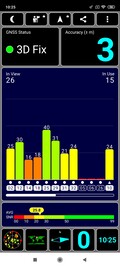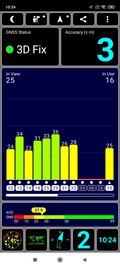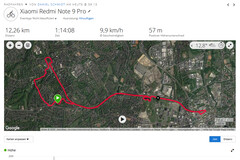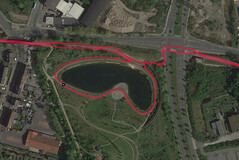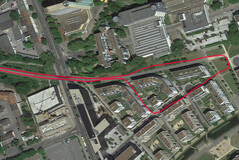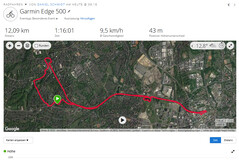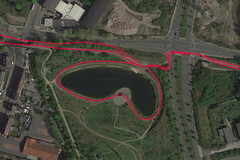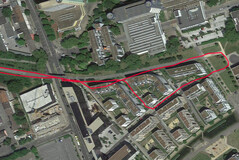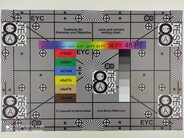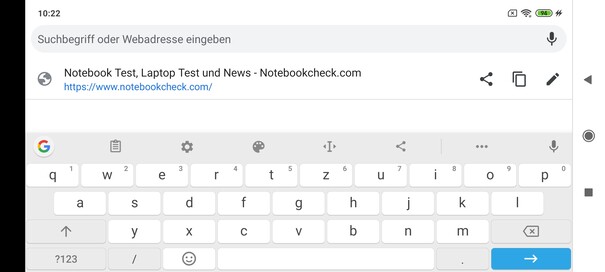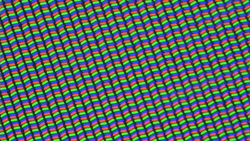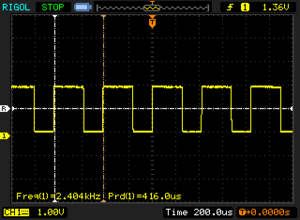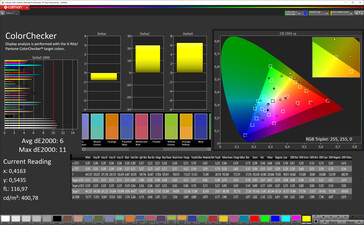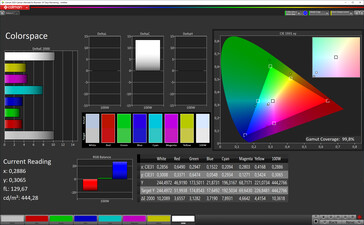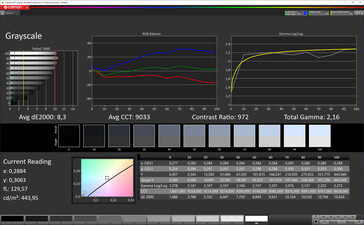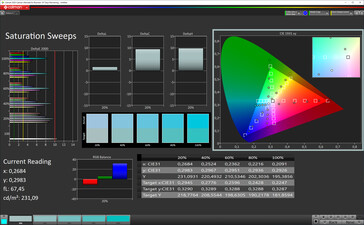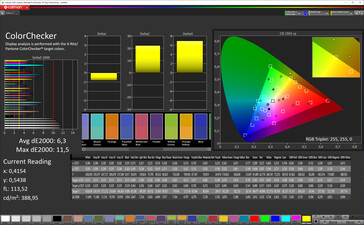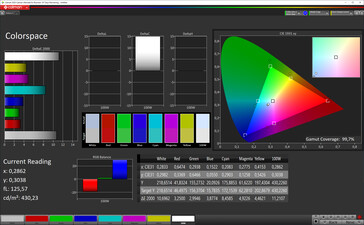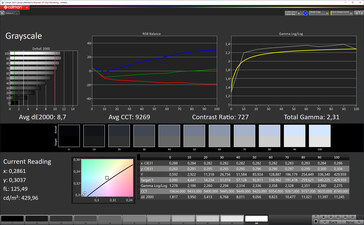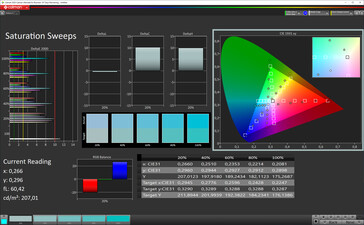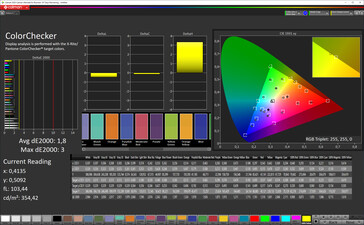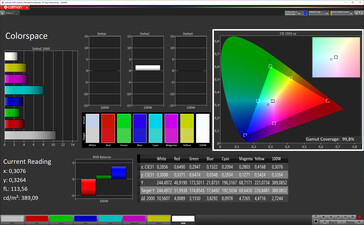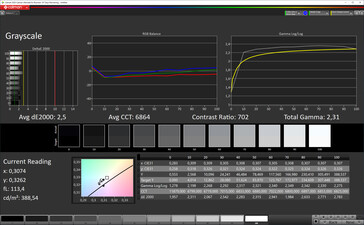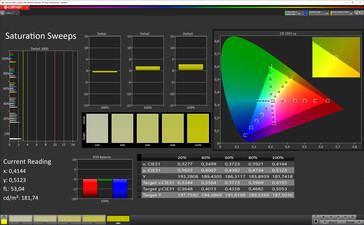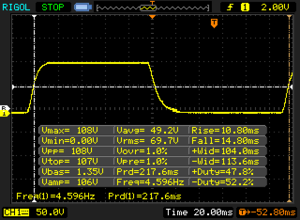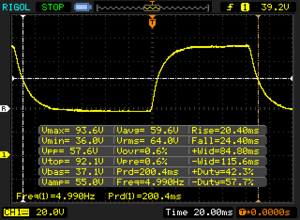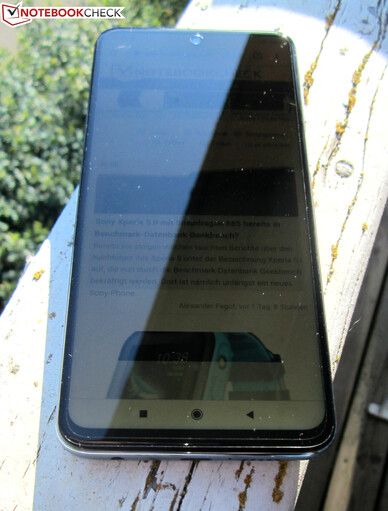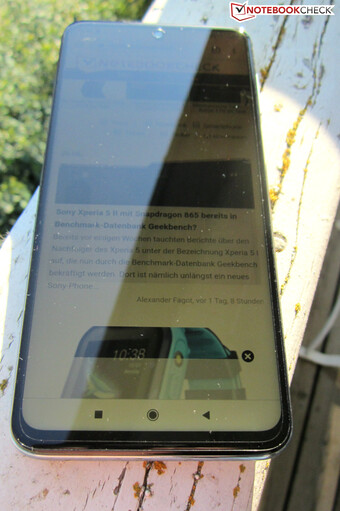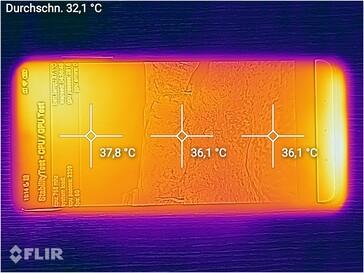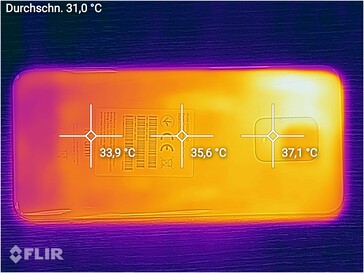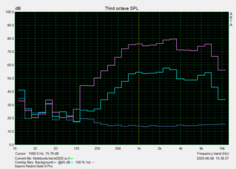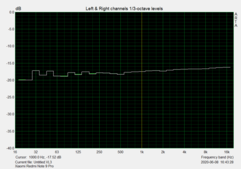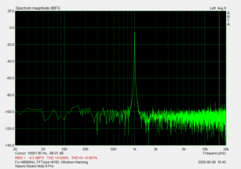Xiaomi Redmi Note 9 Pro Smartphone Review: Plenty of features for a cheap price
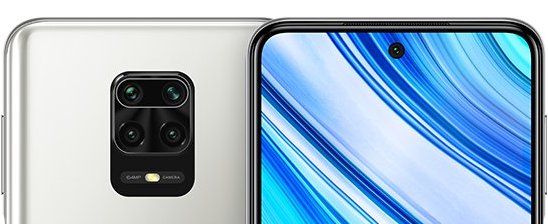
After the Redmi Note 9S, Xiaomi has now released another exciting mobile phone in the form of the Redmi Note 9 Pro. For a relatively cheap price, Xiaomi once again offers a large smartphone with a lot of features. The Redmi Note 9 Pro is aimed at the upper mid-range segment.
A 6.67-inch IPS display with a resolution of 2400x1080 pixels, 6 GB of LPDDR4X RAM, the octa-core Qualcomm Snapdragon 720G SoC and an impressive 5020-mAh battery are the main ingredients of the Redmi Note 9 Pro.
Our configuration of the Redmi Note 9 Pro with 64 GB of storage space can be purchased starting from 250 Euros (~$282). The 128-GB variant is available for 299 Euros (~$337).
Competing Devices
Rating | Date | Model | Weight | Drive | Size | Resolution | Price |
|---|---|---|---|---|---|---|---|
| 82.9 % v7 (old) | 06 / 2020 | Xiaomi Redmi Note 9 Pro SD 720G, Adreno 618 | 209 g | 64 GB UFS 2.0 Flash | 6.67" | 2400x1080 | |
| 79.8 % v7 (old) | 01 / 2020 | Samsung Galaxy A51 Exynos 9611, Mali-G72 MP3 | 172 g | 128 GB UFS 2.0 Flash | 6.50" | 2400x1080 | |
| 80.7 % v7 (old) | 11 / 2019 | Xiaomi Redmi Note 8 Pro Helio G90T, Mali-G76 MP4 | 200 g | 128 GB UFS 2.0 Flash | 6.53" | 2340x1080 | |
| 79.6 % v7 (old) | 06 / 2020 | Realme 6 Pro SD 720G, Adreno 618 | 195 g | 128 GB UFS 2.1 Flash | 6.60" | 2400x1080 | |
| 79.8 % v7 (old) | 05 / 2020 | Oppo A91 Helio P70, Mali-G72 MP3 | 172 g | 128 GB UFS 2.0 Flash | 6.40" | 2400x1080 | |
| 81.3 % v7 (old) | 04 / 2020 | Huawei P40 Lite Kirin 810, Mali-G52 MP6 | 183 g | 128 GB UFS 2.1 Flash | 6.40" | 2310x1080 |
Case - 6.67-inch Form Factor, Good Build Quality, Sturdy
While the Xiaomi Mi series is directed at high-end users, the Redmi series covers the entry-level and mid-range segments. Although the Redmi Note 9 Pro comes without luxury features such as a glass back, this is not noticeable at first glance.
Furthermore, the smartphone's appearance is enhanced by its thin bezels, which combined with the shiny back cover and the rounded-off edges and corners result in a fairly premium-looking design. Our test device has a "glacier white" back cover, and an "interstellar grey" as well as a "tropical green" color variant is also available.
Similarly, the feel of the Redmi 9 Pro matches its beautiful design. With a weight of 209 grams (~7.37 oz), it lies well in the hand and material transitions are barely noticeable. Additionally, the display, frame and back cover offer a slight amount of resistance. As a result, the 6.67-inch device never feels smooth enough to slip out of the hand. The Xiaomi smartphone is very robust and unlikely to bend or yield under pressure.
Features - NFC and IR Blaster
Unlike the Redmi Note 9S, the Redmi Note 9 Pro is always equipped with 6 GB of RAM regardless of the internal storage capacity. Meanwhile, the memory speeds are identical: The Redmi Note 9 Pro's 64 GB or 128 GB of storage space also runs at UFS speeds, which is not a given in this price class. However, our memory benchmarks suggest that even though Xiaomi cites UFS 2.1 storage, only UFS 2.0 storage was used.
The internal storage can be expanded via a microSD card with a capacity of up to 512 GB that can be formatted to the exFAT file system. However, we were unable to transfer over app data. It is also noteworthy that the smartphone has room for both a microSD card and two nano SIM cards.
The fact that the USB Type-C port of the Redmi Note 9 Pro only runs at USB 2.0 speeds is likely a consequence of the low price. Thankfully, the budget nature of the phone is not apparent in other areas and there is a headphone jack and an IR blaster, the latter of which is a convenient extra.
Software - Android 10 and MIUI 11 for the Redmi Note 9 Pro
The Redmi Note 9 Pro runs Android 10 with Xiaomi's own user interface MIUI 11. At the time of writing (end of June), the latest security patches date back to April 1, which still makes them fairly recent.
Apart from the Google apps and a small toolbox, Xiaomi has also included a handful of bloatware apps such as Facebook, Netflix and AliExpress in the ROM. However, all of them can be uninstalled if they are not needed.
The Redmi Note 9 Pro supports DRM Widevine level 1, allowing users to stream HD video content from streaming services such as Netflix.
Communication and GPS - Super-Fast Wi-Fi
In addition to GSM and UMTS, the Redmi Note 9 Pro also supports LTE bands 1, 2, 3, 4, 5, 7, 8, 20, 28, 38, 40, and 41, meaning it was not exactly designed for global use. However, European users should not experience any issues.
The 6.67-inch smartphone supports the short-range communications standards NFC, Bluetooth 5.0 and MIMO-compatible Wi-Fi 5 (Wi-Fi 802.11ac). In the real-world test with our reference router Netgear Nighthawk AX12, the smartphone achieves excellent and also fairly consistent download and upload speeds. As a result, its Wi-Fi speeds are significantly higher than those of all of its competitors.
| Networking | |
| iperf3 transmit AX12 | |
| Xiaomi Redmi Note 9 Pro | |
| Huawei P40 Lite | |
| Oppo A91 | |
| Xiaomi Redmi Note 8 Pro | |
| Samsung Galaxy A51 | |
| Realme 6 Pro | |
| iperf3 receive AX12 | |
| Xiaomi Redmi Note 9 Pro | |
| Xiaomi Redmi Note 8 Pro | |
| Samsung Galaxy A51 | |
| Huawei P40 Lite | |
| Oppo A91 | |
| Realme 6 Pro | |
The Redmi Note 9 Pro determines the current position via the satellite navigation networks GPS, Galileo, GLONASS and BeiDou. Although the process takes a while indoors, it is able to locate us with an accuracy of within three meters after about 25 seconds. Outdoors, the precision is identical, while the satellite uplink then only takes a few seconds.
In our real-world navigation test, the Xiaomi smartphone performs admirably as well. While it tracks our position with slightly inferior precision in dense housing areas as opposed to more open areas on our 12-kilometer bike ride compared to the professional navi Garmin Edge 500, the accuracy is still relatively high. It is more than capable of handling daily navigation tasks.
Telephony and Call Quality - Redmi Note 9 Pro with VoLTE and Wi-Fi Calling
The SIM tray of the Redmi Note 9 Pro accepts two nano SIM cards, both of which can be used for 4G connectivity. VoLTE and Wi-Fi calling are supported.
The smartphone's call quality is decent. However, both the earpiece and the speakerphone sound somewhat dull during calls. By contrast, the Redmi Note 9 Pro reliably filters out ambient noise.
Cameras - 64-MP Quad-camera System with a Narrow Dynamic Range
Compared to the predecessor Redmi Note 8 Pro, the camera setup of the Redmi Note 9 Pro has almost not changed. There is still a quad-camera system with a 64-MP resolution. The main camera combines four adjacent pixels into one through pixel-binning, which results in pictures with a default resolution of 16 MP. Via the camera settings, a 64-MP mode is available as well for pictures at the maximum resolution.
In addition to the 64-MP main camera (f/1.89, 1/1.72", 0.8 µm), there is an 8-MP ultra-wide-angle lens (f/2.2, 1/4.0", 1.12µm), a 5-MP macro lens (f/2.4, 1/5", 1.12µm) and a 2-MP sensor for depth information (f/2.4, 1/5", 1.75µm). The differences compared to the Redmi Note 8 Pro are as follows: The macro lens of the previous model only has a resolution of 2 MP. In return, it comes with a 20-MP selfie camera for a nominally slightly higher resolution. On the Redmi Note 9, a 16-MP sensor occupies the front.
In daylight, the quad-camera setup takes decent, sharp pictures (scenes 1 through 4), which are lacking in terms of contrast, making them look somewhat plain. Furthermore, the smartphone's dynamic range is subpar, resulting in lost details in very bright and very dark parts of the image. Night shots are not too impressive either (scene 5), since the camera simply does not do a very good job in this discipline. The Redmi Note 9 Pro is still able to capture pictures with an overall good quality relative to the price. This includes the selfie camera, which also takes decent pictures.
The main camera can record at up to 4K and 30 frames per second or at Full HD and 60 FPS. The selfie camera records videos at up to Full HD and 30 FPS with a respectable image quality that is similar to that of the main camera.
Image comparison
Choose a scene and navigate within the first image. One click changes the position on touchscreens. One click on the zoomed-in image opens the original in a new window. The first image shows the scaled photograph of the test device.
Tageslicht-Szene 1Tageslicht-Szene 25-facher ZoomUltraweitwinkelLowlight-UmgebungControlled lighting conditions reveal that the Redmi Note 9 strays somewhat far from an ideal color representation. Although the smartphone is at its best when displaying red tones in simulated daylight (top ColorChecker card), it still significantly misses the mark when it comes to displaying the reference colors. While the color accuracy is far higher in poor lighting (bottom color card), this does not make up for the overall poor image quality. The Xiaomi smartphone was able to capture our test chart with a sufficient degree of sharpness.
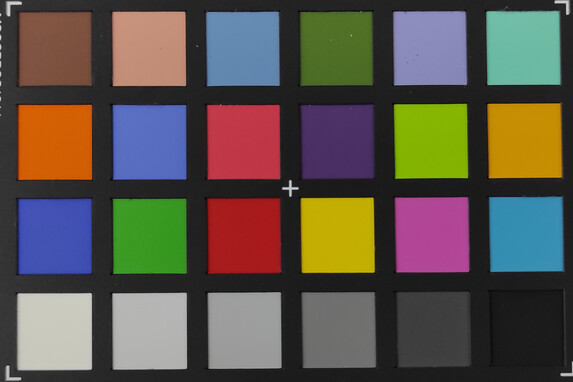
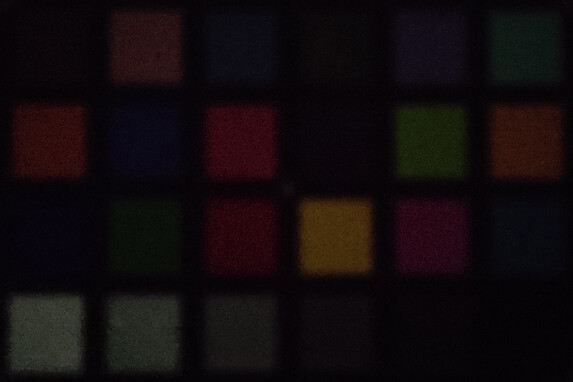
Accessories and Warranty - 33-Watt Quick Charger Included
Xiaomi has included a modular 33-watt charger, a USB cable (Type-A to Type-C), a SIM tool and a protective case in the Redmi Note 9 Pro's scope of delivery. The package also includes a quick-start guide and a pamphlet with warranty information.
Xiaomi offers buyers of the Redmi Note 9 Pro a 24-month warranty.
Input Devices & Handling - Power Button with Integrated Fingerprint Sensor
The Redmi Note 9 Pro offers a very smooth user experience thanks to its octa-core Snapdragon 720G SoC. It is complemented by hitch-free input devices, which mainly includes the 6.67-inch touchscreen and its pre-applied screen protector. The same holds true for the fingerprint sensor within the power button, which reliably unlocks the smartphone - previously, the fingerprint sensor was located on the back of the Redmi Note 8 Pro. Alternatively, the Redmi Note 9 Pro can also be unlocked via facial recognition. However, it only uses 2D facial data.
Display - Default Color Mode with a High Color Fidelity
The IPS display's resolution of 2400x1080 pixels is starting to become common among mid-range devices, and in this case it translates to a high pixel density of 395 PPI. The panel reaches a fairly high average luminance of 578.6 cd/m² with the ambient light sensor enabled, which is the default setting. While the smartphone displays an even distribution of bright and dark areas (APL50) with a maximum brightness of 572 cd/m², disabling the ambient light sensor results in a lower brightness of 449 cd/m².
The Redmi Note 9 uses pulse-width modulation (PWM) to control the display's brightness. However, PWM flickering only occurs at brightness levels of 43% and below. Even then, the frequency of 2404 Hz is so high that even sensitive users should not be affected by it.
| |||||||||||||||||||||||||
Brightness Distribution: 92 %
Center on Battery: 610 cd/m²
Contrast: 1649:1 (Black: 0.37 cd/m²)
ΔE ColorChecker Calman: 1.8 | ∀{0.5-29.43 Ø4.77}
ΔE Greyscale Calman: 2.5 | ∀{0.09-98 Ø5}
99.8% sRGB (Calman 2D)
Gamma: 2.31
CCT: 6864 K
| Xiaomi Redmi Note 9 Pro IPS, 2400x1080, 6.7" | Samsung Galaxy A51 AMOLED, 2400x1080, 6.5" | Xiaomi Redmi Note 8 Pro IPS, 2340x1080, 6.5" | Realme 6 Pro IPS, 2400x1080, 6.6" | Oppo A91 AMOLED, 2400x1080, 6.4" | Huawei P40 Lite IPS, 2310x1080, 6.4" | |
|---|---|---|---|---|---|---|
| Screen | -34% | -65% | -86% | -112% | -43% | |
| Brightness middle (cd/m²) | 610 | 589 -3% | 669 10% | 442 -28% | 594 -3% | 478 -22% |
| Brightness (cd/m²) | 579 | 589 2% | 630 9% | 419 -28% | 613 6% | 448 -23% |
| Brightness Distribution (%) | 92 | 94 2% | 87 -5% | 90 -2% | 89 -3% | 87 -5% |
| Black Level * (cd/m²) | 0.37 | 0.42 -14% | 0.37 -0% | 0.49 -32% | ||
| Contrast (:1) | 1649 | 1593 -3% | 1195 -28% | 976 -41% | ||
| Colorchecker dE 2000 * | 1.8 | 2.22 -23% | 4.8 -167% | 6.1 -239% | 6.1 -239% | 3 -67% |
| Colorchecker dE 2000 max. * | 3 | 8.24 -175% | 9 -200% | 9.7 -223% | 10.6 -253% | 5.6 -87% |
| Greyscale dE 2000 * | 2.5 | 2.6 -4% | 6.2 -148% | 5.9 -136% | 7 -180% | 4.1 -64% |
| Gamma | 2.31 95% | 2.111 104% | 2.24 98% | 2.35 94% | 2.28 96% | 2.26 97% |
| CCT | 6864 95% | 6508 100% | 7846 83% | 7631 85% | 7370 88% | 7282 89% |
* ... smaller is better
Screen Flickering / PWM (Pulse-Width Modulation)
| Screen flickering / PWM detected | 2404 Hz | ≤ 43 % brightness setting | |
The display backlight flickers at 2404 Hz (worst case, e.g., utilizing PWM) Flickering detected at a brightness setting of 43 % and below. There should be no flickering or PWM above this brightness setting. The frequency of 2404 Hz is quite high, so most users sensitive to PWM should not notice any flickering. In comparison: 53 % of all tested devices do not use PWM to dim the display. If PWM was detected, an average of 8084 (minimum: 5 - maximum: 343500) Hz was measured. | |||
Taking a closer look at the smartphone with a spectrophotometer and the CalMAN software confirms our positive impression. The Redmi Note 9 shines with great contrasts and an even illumination across the entire IPS panel. The "standard" color profile offers the highest color accuracy. In comparison, the modes "automatic" (default setting) and "increased contrast" miss the mark by a large margin and they are also accompanied by a slight blue tint. However, these are the right settings for users who are looking for a more colorful experience.
Display Response Times
| ↔ Response Time Black to White | ||
|---|---|---|
| 25.6 ms ... rise ↗ and fall ↘ combined | ↗ 10.8 ms rise | |
| ↘ 14.8 ms fall | ||
| The screen shows relatively slow response rates in our tests and may be too slow for gamers. In comparison, all tested devices range from 0.1 (minimum) to 240 (maximum) ms. » 60 % of all devices are better. This means that the measured response time is worse than the average of all tested devices (20.2 ms). | ||
| ↔ Response Time 50% Grey to 80% Grey | ||
| 44.8 ms ... rise ↗ and fall ↘ combined | ↗ 20.4 ms rise | |
| ↘ 24.4 ms fall | ||
| The screen shows slow response rates in our tests and will be unsatisfactory for gamers. In comparison, all tested devices range from 0.165 (minimum) to 636 (maximum) ms. » 75 % of all devices are better. This means that the measured response time is worse than the average of all tested devices (31.6 ms). | ||
Thanks to its high luminosity, the Redmi Note 9 Pro is well suited to outdoor use. As per usual, direct sunlight should be avoided in order to prevent glare and reflections that make it significantly harder to read the display. However, the screen content still remains visible even in this case.
Viewing the IPS panel from a very steep angle does not result in distorted colors. Instead, this only decreases the perceived brightness, which is not really an issue.
Performance - High Performance Thanks to the Snapdragon 720G
The combination of the octa-core Snapdragon 720G SoC, the Adreno 618 graphics unit and 6 GB of LPDDR4X RAM has turned the Xiaomi Redmi Note 9 Pro into a snappy mid-range smartphone.
As our synthetic benchmarks show, it offers more than enough performance for daily use, although it is not one of the fastest phones in our comparison. While the Realme 6 Pro, which is equipped with the same CPU/GPU combination, achieves very similar results in graphics-intensive tests such as 3DMark, it outperforms our Xiaomi test device in system benchmarks such as AnTuTu and PCMark by a small margin. Meanwhile, the Huawei P40 Lite is the clear winner overall in terms of raw performance.
| AnTuTu v8 - Total Score (sort by value) | |
| Xiaomi Redmi Note 9 Pro | |
| Samsung Galaxy A51 | |
| Xiaomi Redmi Note 8 Pro | |
| Realme 6 Pro | |
| Huawei P40 Lite | |
| Average Qualcomm Snapdragon 720G (253274 - 288306, n=5) | |
The Redmi Note 9 Pro performs well when browsing the web. Subjectively, everything is smooth - web pages load quickly, links can be swiftly navigated to and even more-complex HTML-5 pages do not pose a challenge to the smartphone. Thus, the Redmi Note 9 Pro is able to claim second place in our comparison, which puts it directly below the Huawei P40 Lite in our browser benchmarks.
| Jetstream 2 - 2.0 Total Score | |
| Average of class Smartphone (23.8 - 387, n=148, last 2 years) | |
| Huawei P40 Lite (Huawei Browser 10.1.0.300) | |
| Xiaomi Redmi Note 9 Pro (Chrome 80.0.3987.99) | |
| Average Qualcomm Snapdragon 720G (37.8 - 54.4, n=4) | |
| Xiaomi Redmi Note 8 Pro (Chrome 78) | |
| Samsung Galaxy A51 (Chrome 79) | |
| JetStream 1.1 - Total Score | |
| Huawei P40 Lite (Huawei Browser 10.1.0.300) | |
| Realme 6 Pro (Chrome 83) | |
| Xiaomi Redmi Note 9 Pro (Chrome 80.0.3987.99) | |
| Average Qualcomm Snapdragon 720G (59.7 - 94.7, n=5) | |
| Xiaomi Redmi Note 8 Pro (Chrome 78) | |
| Samsung Galaxy A51 (Chrome 79) | |
| Speedometer 2.0 - Result 2.0 | |
| Average of class Smartphone (15.2 - 643, n=121, last 2 years) | |
| Huawei P40 Lite (Huawei Browser 10.1.0.300) | |
| Xiaomi Redmi Note 9 Pro (Chrome 80.0.3987.99) | |
| Xiaomi Redmi Note 8 Pro (Chrome 78) | |
| Average Qualcomm Snapdragon 720G (26.8 - 45.2, n=4) | |
| Samsung Galaxy A51 (Chrome 79) | |
| WebXPRT 3 - Overall | |
| Average of class Smartphone (38 - 380, n=31, last 2 years) | |
| Huawei P40 Lite (Huawei Browser 10.1.0.300) | |
| Xiaomi Redmi Note 9 Pro (Chrome 80.0.3987.99) | |
| Average Qualcomm Snapdragon 720G (53 - 78, n=5) | |
| Realme 6 Pro (Chrome 83) | |
| Samsung Galaxy A51 (Chrome 79) | |
| Xiaomi Redmi Note 8 Pro (Chrome 78) | |
| Octane V2 - Total Score | |
| Average of class Smartphone (2228 - 126661, n=196, last 2 years) | |
| Huawei P40 Lite (Huawei Browser 10.1.0.300) | |
| Xiaomi Redmi Note 9 Pro (Chrome 80.0.3987.99) | |
| Realme 6 Pro (Chrome 83) | |
| Average Qualcomm Snapdragon 720G (11846 - 17734, n=5) | |
| Xiaomi Redmi Note 8 Pro (Chrome 78) | |
| Samsung Galaxy A51 (Chrome 79) | |
| Mozilla Kraken 1.1 - Total | |
| Samsung Galaxy A51 (Chrome 79) | |
| Realme 6 Pro (Chrome 83) | |
| Xiaomi Redmi Note 8 Pro (Chrome 78) | |
| Average Qualcomm Snapdragon 720G (2532 - 3577, n=5) | |
| Xiaomi Redmi Note 9 Pro (Chrome 80.0.3987.99) | |
| Huawei P40 Lite (Huawei Browser 10.1.0.300) | |
| Average of class Smartphone (257 - 28190, n=156, last 2 years) | |
* ... smaller is better
The UFS storage of the Redmi Note 9 Pro guarantees good data transfer rates with a focus on high sequential read speeds for quick app-loading times. Meanwhile, the Huawei P40 Lite once again significantly outperforms our test device. Although according to Xiaomi, the Redmi Note 9 Pro uses UFS 2.1 memory, our measurements indicate that only UFS 2.0 storage has been installed.
While the Redmi Note 9 Pro achieves decent results in terms of microSD card performance, its write speeds could have been better. That being said, its competitors show that there is not much room for improvement anyway.
| Xiaomi Redmi Note 9 Pro | Samsung Galaxy A51 | Xiaomi Redmi Note 8 Pro | Realme 6 Pro | Oppo A91 | Huawei P40 Lite | Average 64 GB UFS 2.0 Flash | Average of class Smartphone | |
|---|---|---|---|---|---|---|---|---|
| AndroBench 3-5 | -1% | 17% | 19% | -6% | 35% | -5% | 424% | |
| Sequential Read 256KB (MB/s) | 498.1 | 496.1 0% | 535 7% | 513 3% | 505 1% | 913 83% | 513 ? 3% | 2253 ? 352% |
| Sequential Write 256KB (MB/s) | 171.1 | 184.9 8% | 193.5 13% | 203.3 19% | 185.3 8% | 181.7 6% | 175.2 ? 2% | 1878 ? 998% |
| Random Read 4KB (MB/s) | 122.6 | 110.8 -10% | 156.2 27% | 158.7 29% | 145.6 19% | 157.3 28% | 117.1 ? -4% | 298 ? 143% |
| Random Write 4KB (MB/s) | 112.9 | 104.4 -8% | 180.4 60% | 154 36% | 28.55 -75% | 175.4 55% | 81.1 ? -28% | 342 ? 203% |
| Sequential Read 256KB SDCard (MB/s) | 76.7 ? | 73 ? -5% | 71.6 ? -7% | 86.4 ? 13% | 77.2 ? 1% | 82.6 ? 8% | 73.4 ? -4% | |
| Sequential Write 256KB SDCard (MB/s) | 54.9 ? | 60.1 ? 9% | 57.3 ? 4% | 63.4 ? 15% | 60.3 ? 10% | 70.6 ? 29% | 55.4 ? 1% |
Gaming - Smooth but Limited to 30 FPS
The preinstalled apps include Xiaomi's game turbo, which is supposed to improve the gameplay experience. It allows users to set limits for button and full-screen gestures while gaming and to increase the sensitivity of the touchscreen.
Since games run smoothly even without the game turbo's small optimizations, the app seems unnecessary. As our Gamebench benchmarks show, the smartphone does not break a sweat even at maximum detail settings. While the frame rate cannot exceed 30 FPS, it also only rarely falls below this value.
Emissions - No Throttling Under Load
Temperature
With up to just 38.4 °C, the thermals of the Redmi Note 9 Pro remain in a pleasantly low range for comfortable handling at all times. Internally, the smartphone dissipates heat so efficiently that the SoC's clock speeds do not need to be throttled. In the GFXBench battery tests, the frame rates remain consistently high in both the T-Rex and the more-demanding Manhattan benchmark even after rendering the same scene 30 times consecutively.
(+) The maximum temperature on the upper side is 38.4 °C / 101 F, compared to the average of 35.2 °C / 95 F, ranging from 21.9 to 247 °C for the class Smartphone.
(+) The bottom heats up to a maximum of 38.5 °C / 101 F, compared to the average of 34 °C / 93 F
(+) In idle usage, the average temperature for the upper side is 27.1 °C / 81 F, compared to the device average of 32.9 °C / 91 F.
Speakers
Although the speaker on the bottom of the smartphone produces very linear mid and high tones, it appears to only know bass from hearsay. With 87.1 dB(A), it is able to reach a relatively high and distortion-free maximum volume level. It is generally well suited to occasional video and music playback. Furthermore, voices can be clearly understood, making it a good choice for hands-free mode.
External audio devices can be connected to the Redmi Note 9 Pro via the 3.5-mm headphone jack or via Bluetooth 5.0.
Xiaomi Redmi Note 9 Pro audio analysis
(+) | speakers can play relatively loud (87.1 dB)
Bass 100 - 315 Hz
(-) | nearly no bass - on average 30.7% lower than median
(±) | linearity of bass is average (10.5% delta to prev. frequency)
Mids 400 - 2000 Hz
(+) | balanced mids - only 4.8% away from median
(+) | mids are linear (5.1% delta to prev. frequency)
Highs 2 - 16 kHz
(+) | balanced highs - only 3.4% away from median
(+) | highs are linear (4.3% delta to prev. frequency)
Overall 100 - 16.000 Hz
(±) | linearity of overall sound is average (20.2% difference to median)
Compared to same class
» 33% of all tested devices in this class were better, 9% similar, 58% worse
» The best had a delta of 11%, average was 35%, worst was 134%
Compared to all devices tested
» 52% of all tested devices were better, 8% similar, 40% worse
» The best had a delta of 4%, average was 24%, worst was 134%
Xiaomi Redmi Note 8 Pro audio analysis
(±) | speaker loudness is average but good (79.3 dB)
Bass 100 - 315 Hz
(-) | nearly no bass - on average 23.2% lower than median
(±) | linearity of bass is average (11.8% delta to prev. frequency)
Mids 400 - 2000 Hz
(+) | balanced mids - only 4.5% away from median
(+) | mids are linear (4.2% delta to prev. frequency)
Highs 2 - 16 kHz
(±) | higher highs - on average 5.3% higher than median
(+) | highs are linear (3.8% delta to prev. frequency)
Overall 100 - 16.000 Hz
(±) | linearity of overall sound is average (25.6% difference to median)
Compared to same class
» 63% of all tested devices in this class were better, 7% similar, 30% worse
» The best had a delta of 11%, average was 35%, worst was 134%
Compared to all devices tested
» 78% of all tested devices were better, 5% similar, 17% worse
» The best had a delta of 4%, average was 24%, worst was 134%
Energy Management - Enormously Long Battery Life Thanks to a Huge Battery
Energy Consumption
On average, the Redmi Note 9 Pro only consumes 3.88 watts under load, making it relatively energy efficient. However, the smartphone still falls short of its predecessor Redmi Note 8 Pro and the Realme 6 Pro in this category.
With the included 33-watt charger, the Redmi Note 9 Pro can quickly recharge its 5020-mAh battery. Fully recharging the device took exactly two hours in our test.
| Off / Standby | |
| Idle | |
| Load |
|
Key:
min: | |
| Xiaomi Redmi Note 9 Pro 5020 mAh | Samsung Galaxy A51 4000 mAh | Xiaomi Redmi Note 8 Pro 4500 mAh | Realme 6 Pro 4300 mAh | Oppo A91 4025 mAh | Huawei P40 Lite 4200 mAh | Average Qualcomm Snapdragon 720G | Average of class Smartphone | |
|---|---|---|---|---|---|---|---|---|
| Power Consumption | -5% | -14% | -11% | 15% | 3% | -4% | -24% | |
| Idle Minimum * (Watt) | 0.75 | 0.9 -20% | 0.79 -5% | 0.92 -23% | 0.82 -9% | 0.79 -5% | 0.982 ? -31% | 0.846 ? -13% |
| Idle Average * (Watt) | 2.19 | 1.7 22% | 2.32 -6% | 1.79 18% | 1.73 21% | 2.14 2% | 1.94 ? 11% | 1.444 ? 34% |
| Idle Maximum * (Watt) | 2.24 | 1.8 20% | 2.38 -6% | 1.88 16% | 1.75 22% | 2.23 -0% | 2.06 ? 8% | 1.627 ? 27% |
| Load Average * (Watt) | 3.88 | 5.2 -34% | 4.72 -22% | 5.41 -39% | 2.33 40% | 3.6 7% | 4.02 ? -4% | 7.04 ? -81% |
| Load Maximum * (Watt) | 5.97 | 6.6 -11% | 7.68 -29% | 7.59 -27% | 5.97 -0% | 5.17 13% | 6.16 ? -3% | 11.3 ? -89% |
* ... smaller is better
Battery Life
With a capacity of 5020-mAh, the battery of the Redmi Note 9 Pro is decidedly large and is in fact the largest battery of any smartphone in our comparison. The only direct competitor in this aspect is its sibling Redmi Note 9S, which contains the same battery.
The Redmi Note 9 Pro shows a seemingly unending amount of stamina and should easily last users one day or even multiple days. With almost 20 hours, the smartphone reaches an excellent runtime in our Wi-Fi test. When playing an H.264 video, it shows a similarly high amount of stamina.
| Xiaomi Redmi Note 9 Pro 5020 mAh | Samsung Galaxy A51 4000 mAh | Xiaomi Redmi Note 8 Pro 4500 mAh | Realme 6 Pro 4300 mAh | Oppo A91 4025 mAh | Huawei P40 Lite 4200 mAh | |
|---|---|---|---|---|---|---|
| Battery runtime | -25% | -22% | -12% | -48% | -10% | |
| Reader / Idle (h) | 38.9 | 28.2 -28% | 31.6 -19% | 35.9 -8% | ||
| H.264 (h) | 18.3 | 14.1 -23% | 16.4 -10% | 19.6 7% | ||
| WiFi v1.3 (h) | 19.6 | 11.6 -41% | 14.4 -27% | 17.2 -12% | 10.1 -48% | 16.8 -14% |
| Load (h) | 5.1 | 4.8 -6% | 3.5 -31% | 3.8 -25% |
Pros
Cons
Verdict - Once Again with Plenty of Features for a Cheap Price
With the Redmi Note 9 Pro, Xiaomi has added another smartphone that shines with a great price-performance ratio to its portfolio.
For 250 Euros (~$282), it offers a lot: A bright, 6.67-inch IPS display, 6 GB of RAM, 64 or 128 GB of internal storage, the fast octa-core Snapdragon 720G SoC and a quad-camera system with a resolution of 64 MP. Thanks to the 5020-mAh battery, the Redmi Note 9 Pro reaches excellent runtimes, the 33-watt power adapter charges the smartphone quickly and there are handy extras such as a large card tray that simultaneously accepts one microSD and two SIM cards.
The Xiaomi Redmi Note 9 Pro offers a lot of value for its price, while its long battery life and extra features such as NFC make it stand out from the crowd.
Its disadvantages, on the other hand, are few and far between. That being said, the 64-MP camera is not quite as impressive as its specifications might suggest, since it is ultimately lacking in terms of dynamic range. In contrast, games being limited to 30 FPS is not a huge issue, particularly since they rarely fall below this FPS mark. Although the smartphone contains preinstalled advertisement bloatware, the respective apps can be deleted.
The release of this smartphone may fill buyers of the Redmi Note 9S with regret. While the Redmi Note 9 Pro is physically almost identical, it offers several higher-end features including an NFC module for a rather small premium. Upgrading from a Redmi Note 8 Pro is not particularly worthwhile however, since there were only minor gen-to-gen improvements.
Xiaomi Redmi Note 9 Pro
- 06/23/2020 v7 (old)
Manuel Masiero




